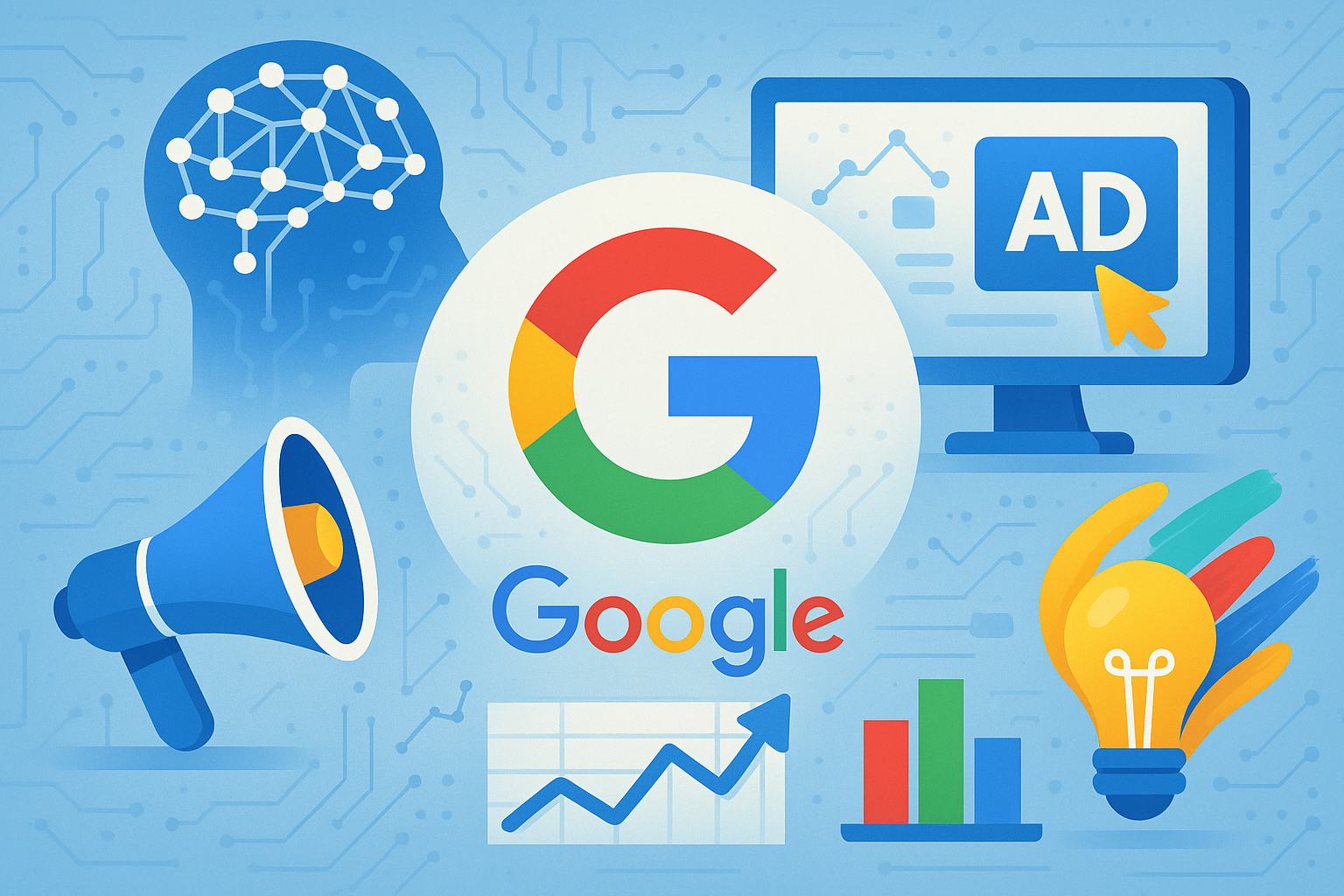Google just launched a major overhaul of its advertising tools, with artificial intelligence taking center stage. At Google Marketing Live 2025 on May 21, the tech giant unveiled AI-powered features that will change how ads are created, displayed, and measured across its platforms. This marks the biggest update to Google Ads in over ten years, powered by Google’s own AI models like Veo and Imagen. The rollout begins immediately in the United States with international expansion planned by the end of 2025.
Key Takeaways
- Google is adding AI tools to its advertising platform that will generate images and videos, identify untapped search opportunities, and place ads within AI-powered search experiences.
- New ad formats will appear in “AI Mode” and “AI Overviews” – Google’s new AI-generated search experiences that allow follow-up questions and provide automatic summaries.
How AI Is Changing Google Ads
Google’s new tools are game-changers. They’re built to help advertisers find hidden opportunities across Google’s massive search ecosystem, which handles over 5 trillion searches each year.
The most impressive new feature is “AI Max for Search” campaigns. This tool uses machine learning to spot and bid on emerging search trends that regular campaigns might miss. It works alongside “Smart Bidding Exploration” – Google’s biggest bidding update in a decade. Together, they help advertisers reach more potential customers without manual tweaking.
Think of it like having a digital assistant that not only follows your instructions but also notices opportunities you didn’t even know existed. The system promises to deliver better results while requiring less hands-on management from marketers.
Where You’ll See These New Ads
Ads are coming to Google’s AI-powered search features. Soon. These new placements will appear in two main areas.
First, they’ll show up in “AI Mode” – an interactive search experience where users get AI-generated answers and can ask follow-up questions. If someone asks about bringing small dogs on flights, they might see helpful information alongside an ad for dog carriers blended naturally into the response.
Second, ads will appear in “AI Overviews” – the automatic summaries Google creates for search queries. This feature will launch first on desktop in the U.S. before expanding globally. Google says these ads will feel relevant rather than intrusive.
Creating Ads With AI Tools
Google’s new creative tools use the company’s Veo and Imagen AI models to generate images and videos from simple text prompts. Advertisers can access these tools directly in Google Ads and Merchant Center. Soon, they’ll be centralized in a new platform called Asset Studio.
One standout feature is “AI outpainting.” It expands video visuals beyond their original frame. Wow! The technology draws inspiration from immersive displays like the Sphere’s version of “The Wizard of Oz.” Marketers can now create eye-catching content that stands out in crowded digital spaces.
These changes mean marketers must adapt quickly. Early feedback from search marketing experts suggests continuous testing will be crucial. Companies need to learn how to use AI not just for optimizing bids but also for creating compelling ad campaigns.
Seafoam Media notes that these tools push marketers toward making AI a standard part of their strategy, allowing for “more efficient and scalable marketing execution.” The tools promise to save time while improving results – if marketers can master them.
Google’s AI advertising revolution has officially begun. The company that transformed how we find information is now reshaping how businesses connect with customers. For marketers, the message is clear: embrace these AI tools or risk falling behind competitors who do. The future of digital advertising has arrived, and it speaks the language of artificial intelligence.


